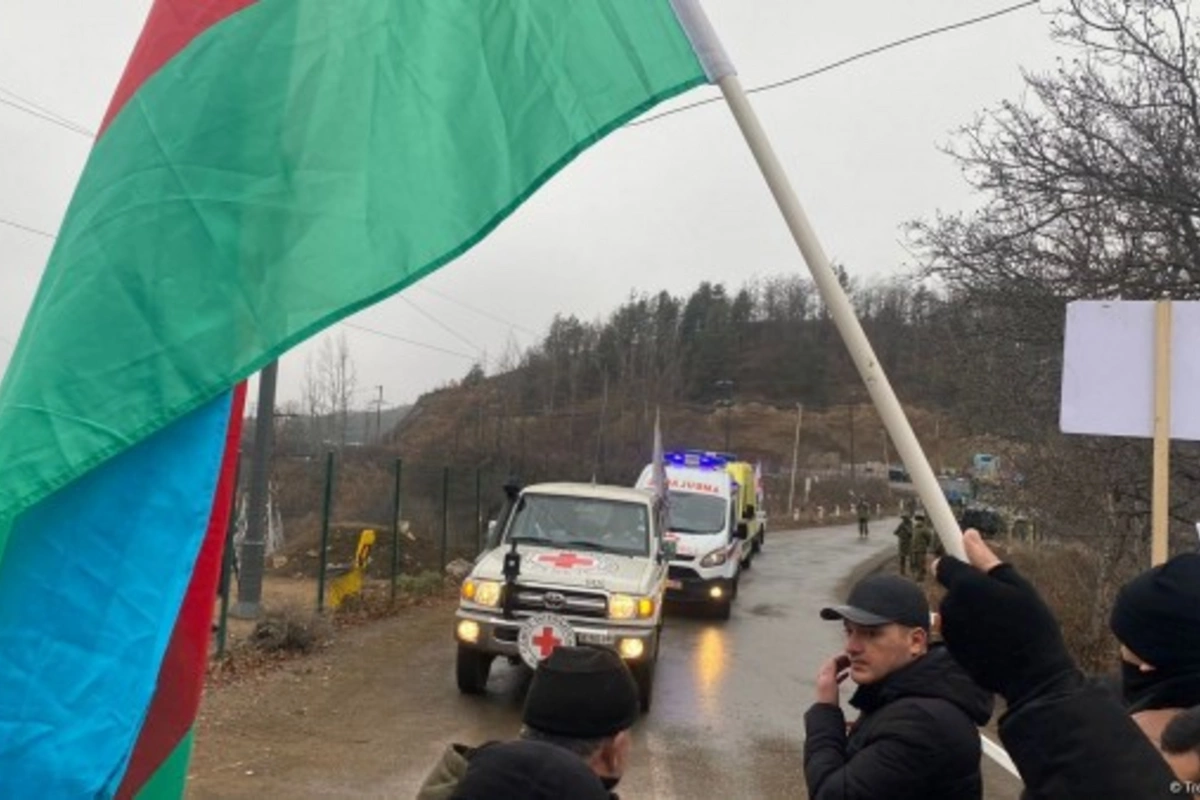
After ten days on the "Lachin" Highway, Azerbaijani protesters continue to demonstrate, ostensibly against unlicensed mining in Armenian-administered areas of Karabakh, but the geopolitical stakes are higher.
Image: Trend.az
The blockage of the road linking the Armenian-populated area of Azerbaijan to the Republic of Armenia[1] is now well into a second week. Armenians claim that the road closure is causing “a humanitarian crisis” in Khankendi (called Stepanakert by Armenians) and accuse the Russian peacekeeping mission of failing to ensure the free flow of supplies along the route. The claim is rejected by Moscow (a Kremlin spokesperson assuring reporters that Russia acts “exclusively in the spirit and letter” of the ceasefire agreements).
The degree to which shortages are causing genuine hardship in Khankendi and beyond are hard to gauge accurately, but news reports have suggested empty markets and supplies of basic foodstuffs running out in some shops. Armenian essayists have written mournful pieces about children praying for a Christmas miracle. Some have gone as far as to suggest provocatively that the blockade is potentially genocidal.
Protesters insist that Armenians can pass under certain circumstances and at least one ambulance was allowed through on December 19, escorted by the International Committee of the Red Cross. However, the mechanism for organizing transit remains somewhat opaque.
The protesters blocking the road self-identify as environmentalists from a range of Azerbaijani NGOs fighting to end illegal mining in rump-NK[2], the Armenian-populated area of the country. As we have previously noted, it’s hard to believe that the protests are not sanctioned explicitly by Baku, given the difficulty of spontaneous access to the area without permission. However, this ambiguity allows Azerbaijan some political leeway. When Armenia took the case of the blockade to the European Court of Human Rights on December 21, despite misleading headlines in the Armenian press, the court took an essentially wait-and-see approach to the issue, stating that the “extent to which the Government of Azerbaijan are currently in control of the situation in the ‘Lachin Corridor’ is disputed and unclear at this stage.” Nonetheless, the Council of Europe Commissioner for Human Rights, Dunja Mijatović, expressed concern over the situation, and some European politicians have called for the rapid end of the action.
Whoever the protesters are, there’s no doubt that Azerbaijanis feel a genuine sense of frustration at the unlicensed mining of minerals on its sovereign territories, something that had been a bugbear throughout the decades-long era of Armenian occupation. The conflation of environmentalism and perceived economic sabotage is partly explained by the Azerbaijani system under which Ecology and Natural Resources (hence mining licenses) fall under a single ministerial ambit.[3] It’s highly likely that the action by protesters is taking place under tacit approval from Baku and is designed to send a strong message to Yerevan – and especially to Armenian activists in Karabakh and the diaspora – that they should curb any secessionist dreams for rump-NK.
On December 20, Robert Wood, the US Ambassador to the UN, told the security council, “The United States is deeply concerned by the ongoing impediments to use of the Lachin Corridor and the growing humanitarian implications of this situation,” suggesting that the blockade “sets back the peace process” between Azerbaijan and Armenia. Other Security Council members reiterated the need to solve the dispute based on international law and the territorial integrity of the countries.
On December 22, White House National Security Advisor Jake Sullivan had a telephone discussion with his Azerbaijani counterpart Hikmet Hajiyev, in which the latter reportedly stressed “Azerbaijan's resolve to move forward [the] regional peace agenda.”
Meanwhile, Yerevan has pulled out of a planned trilateral meeting in Moscow between the foreign ministers of Russia, Armenia and Azerbaijan scheduled for tomorrow (December 23) despite some cajoling from Russian FM Sergei Lavrov, who “expressed regret” over the decision.
Seen from afar, the whole situation appears to be a jostling for geopolitical leverage: a long game of setting the parameters for the new geopolitical status quo in the Caucasus. Evidently, Baku feels able to display that it has limited patience without seeming overly concerned about short-term setbacks.

[2] There’s no politically neutral term for this entity which is the area that remains of the breakaway, never-recognized entity of Nagorno Karabakh following the 2020 2nd Karabakh War. Armenians refer to it as Artsakh, confusingly as that’s the same name as they used for the far bigger occupied area pre-2020. Azerbaijan has no name for it at all as the entity has no official status in Azerbaijan in its current form.
[3] There’s also anger that the Lachin Highway has apparently been used to transport military equipment and landmines.
Share on social media